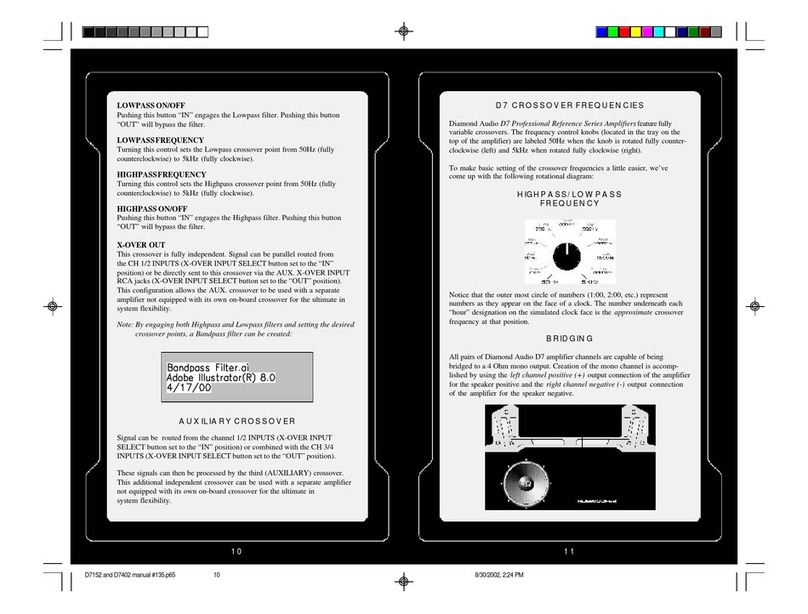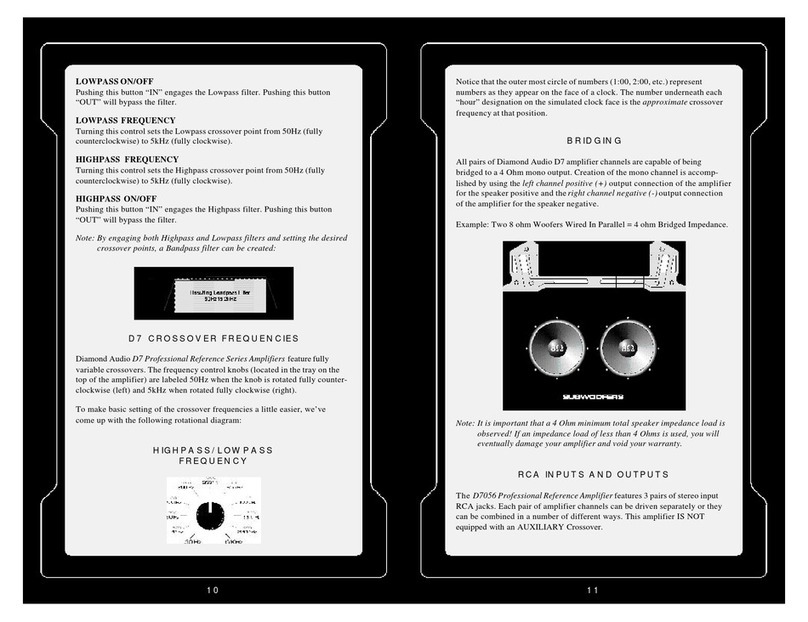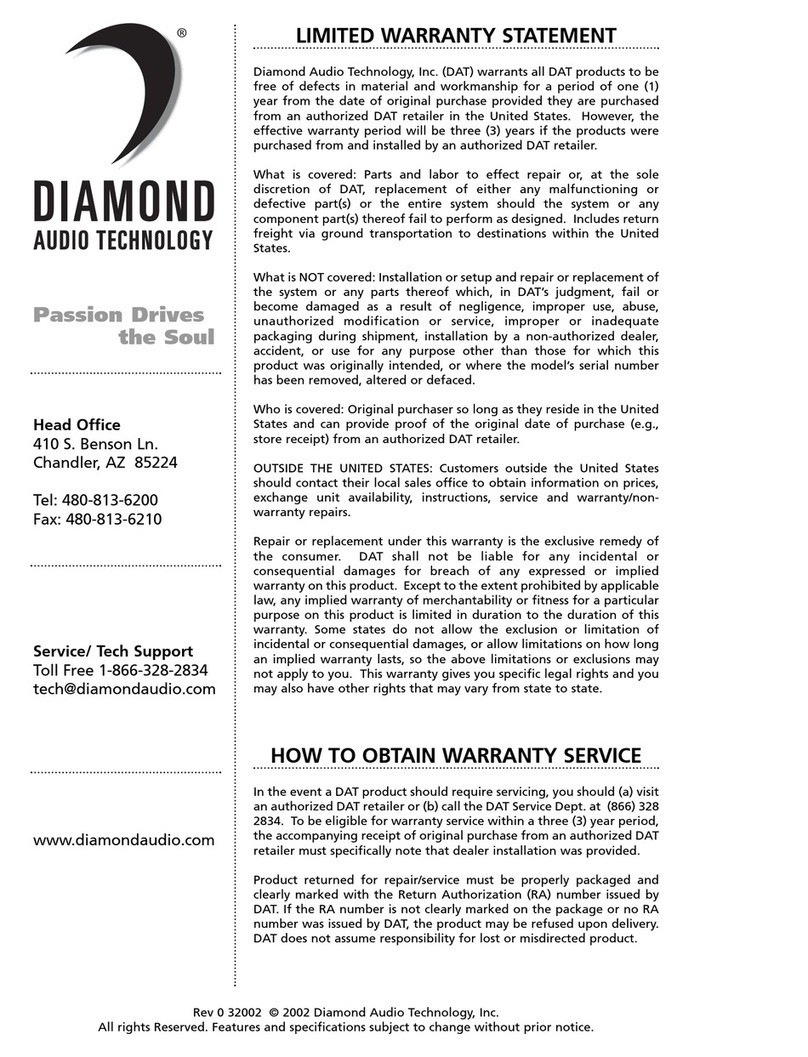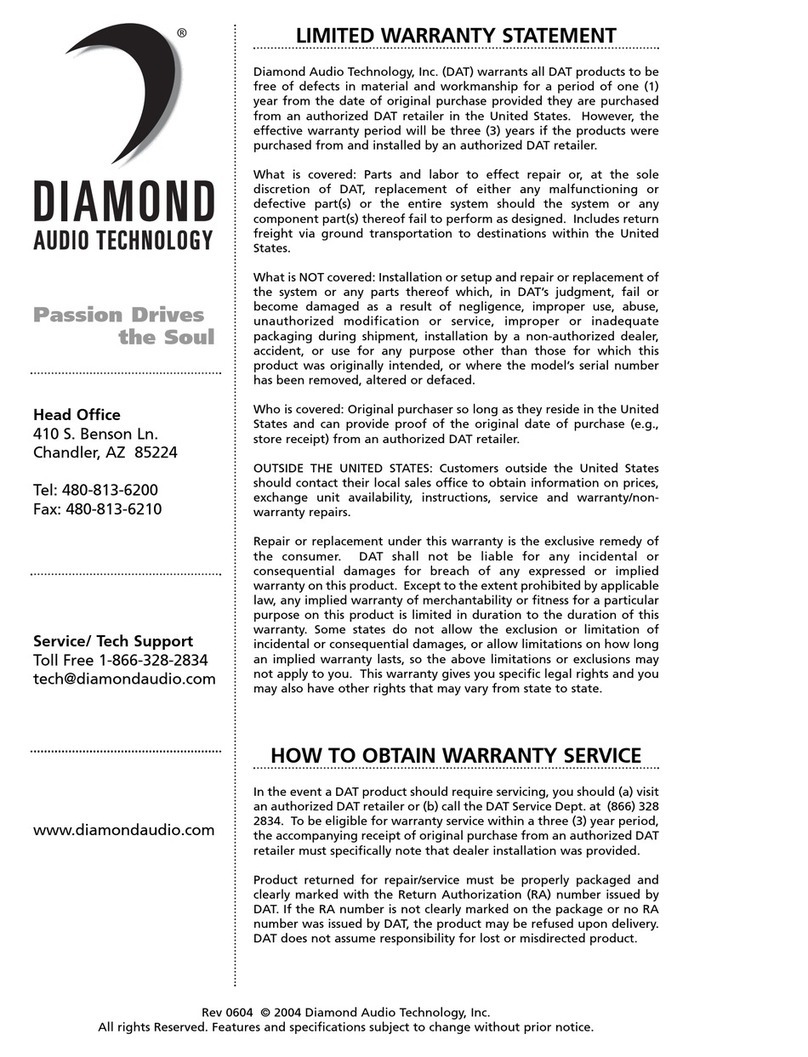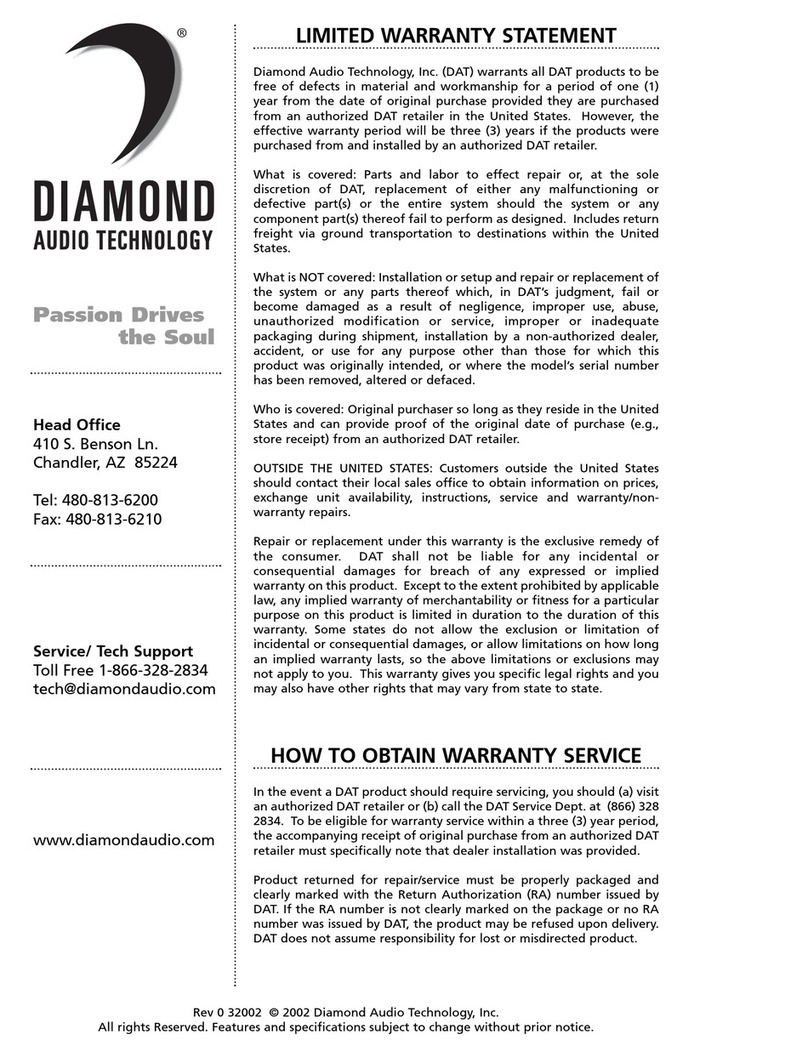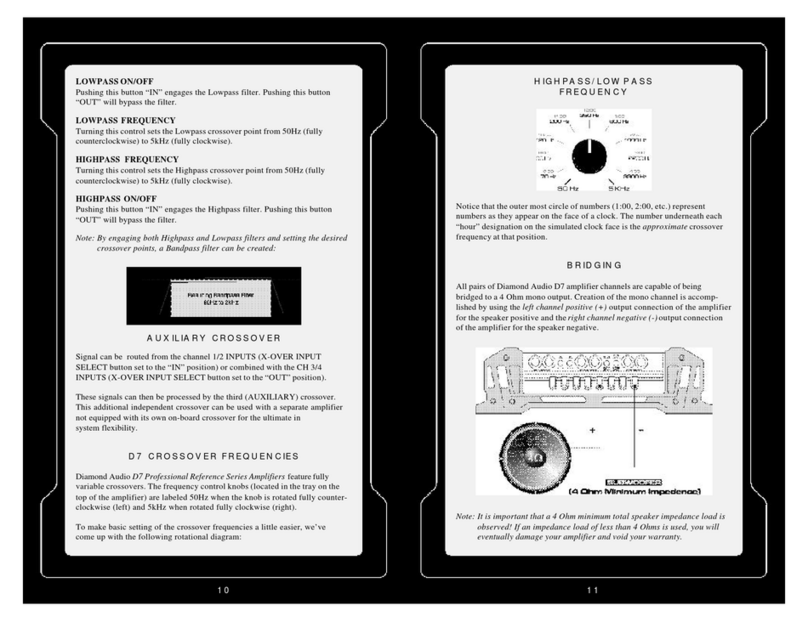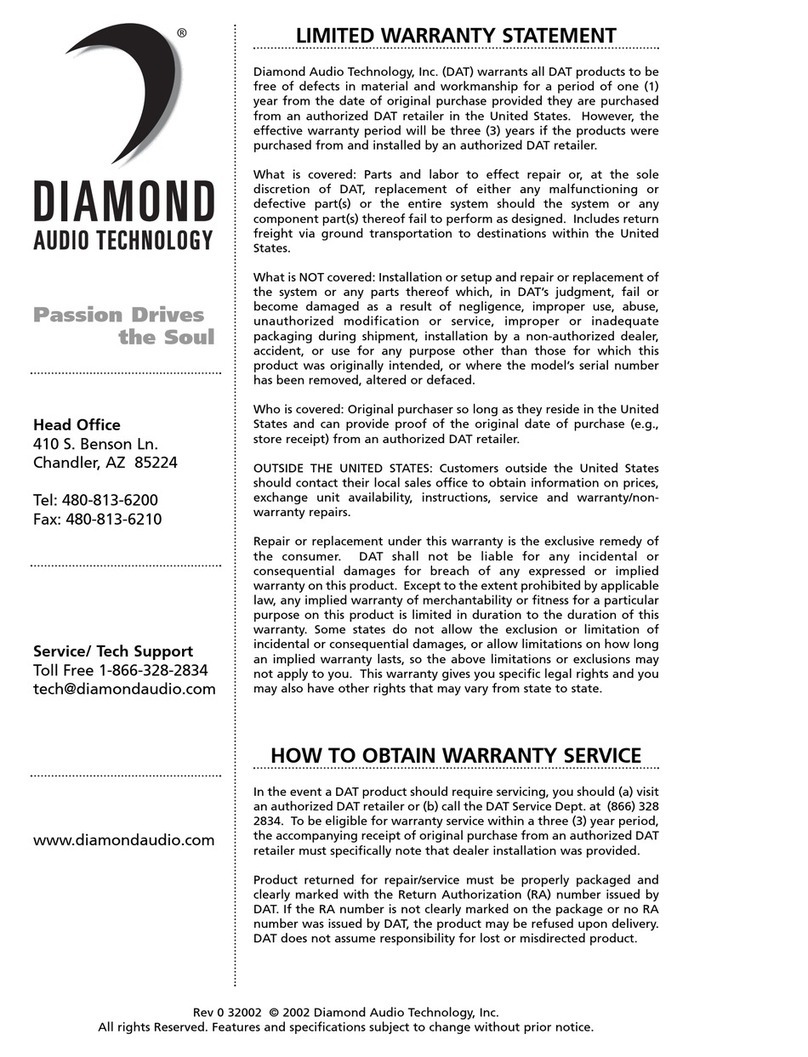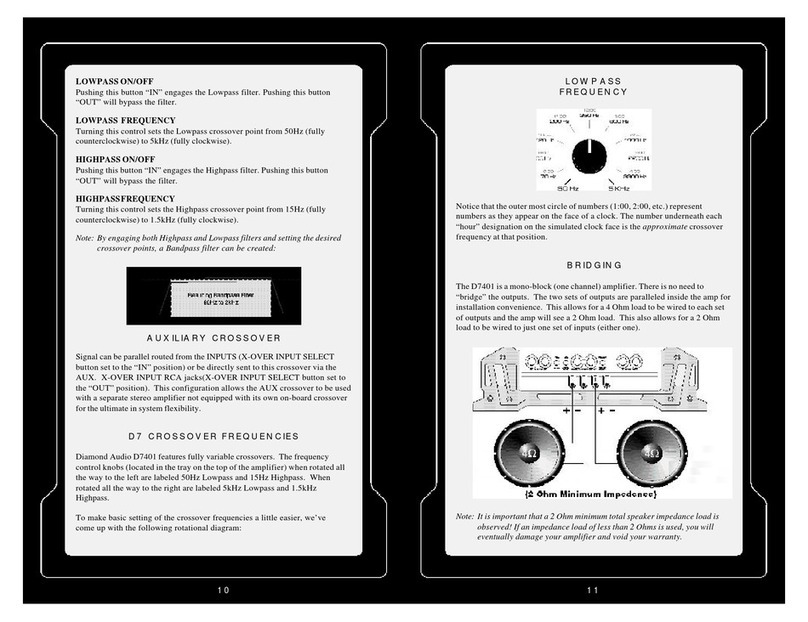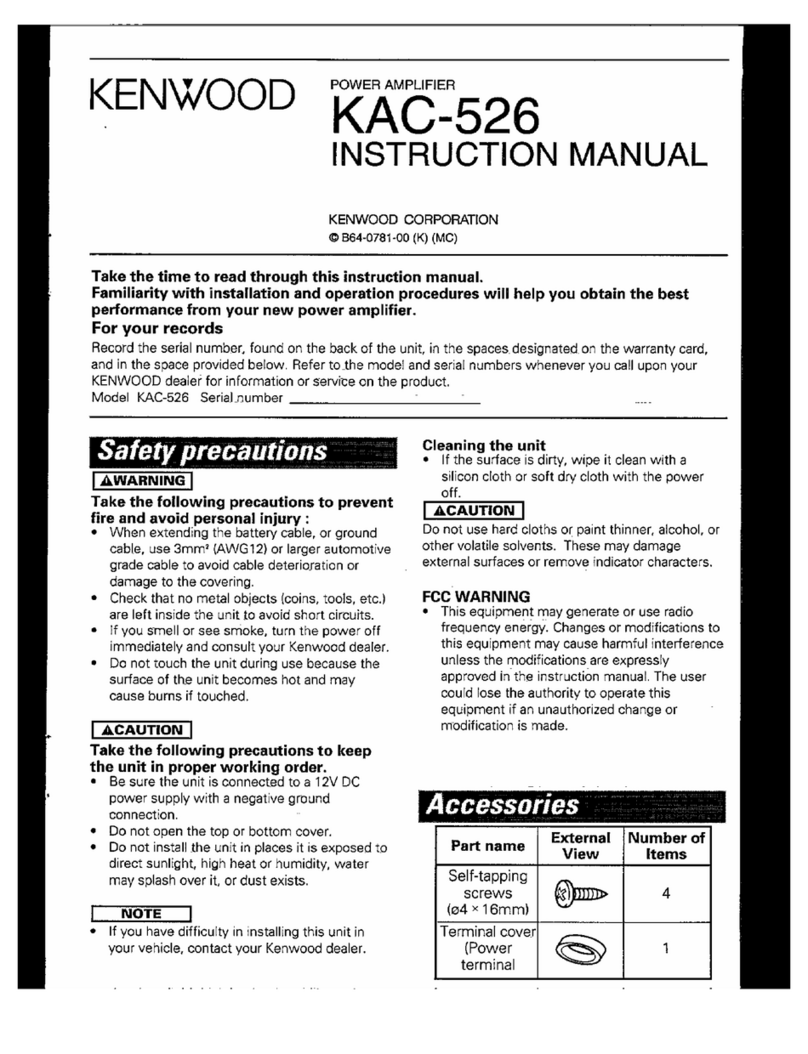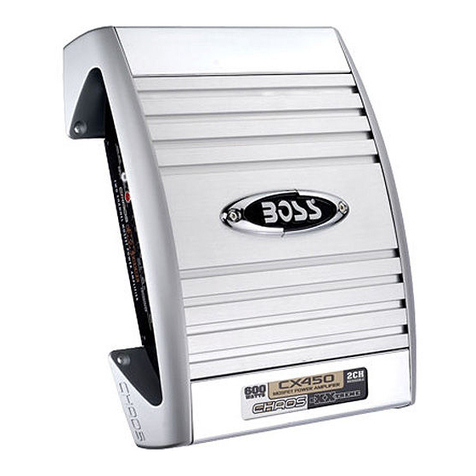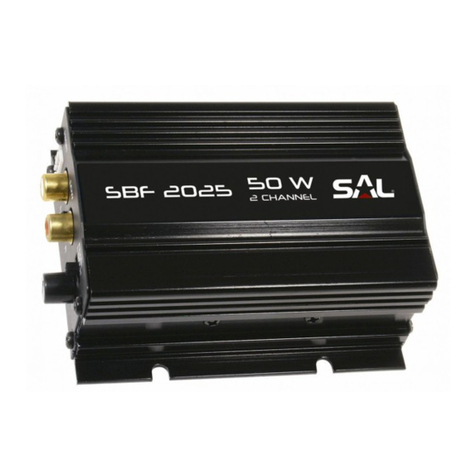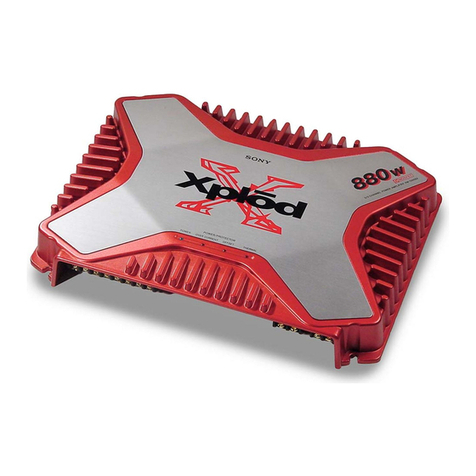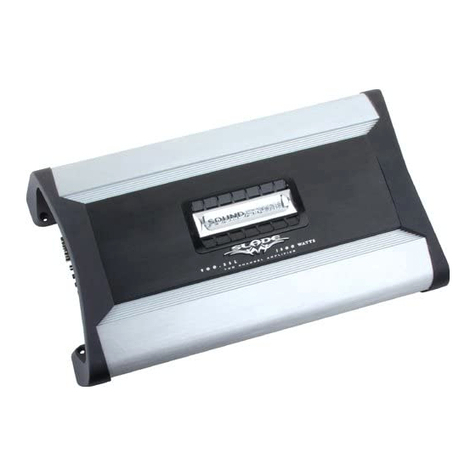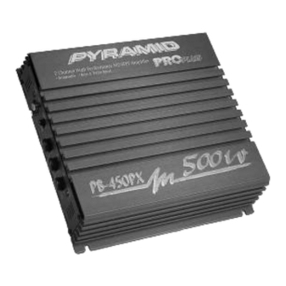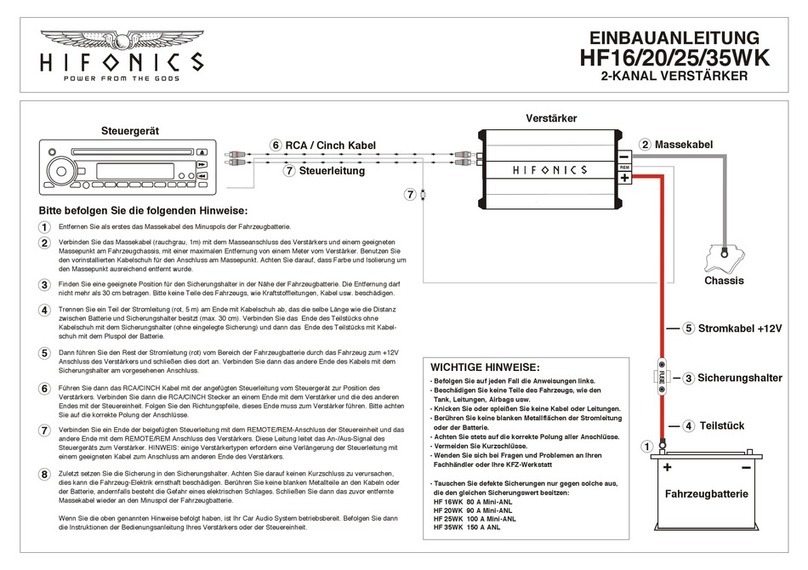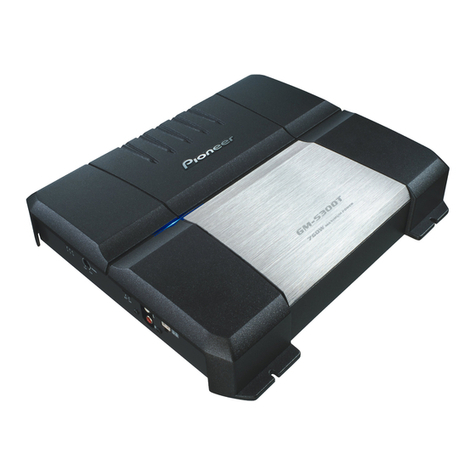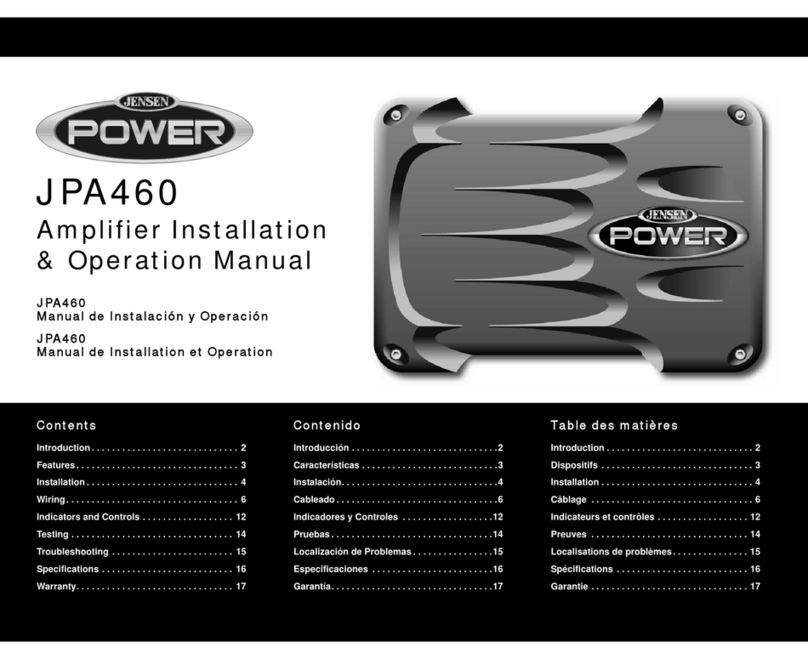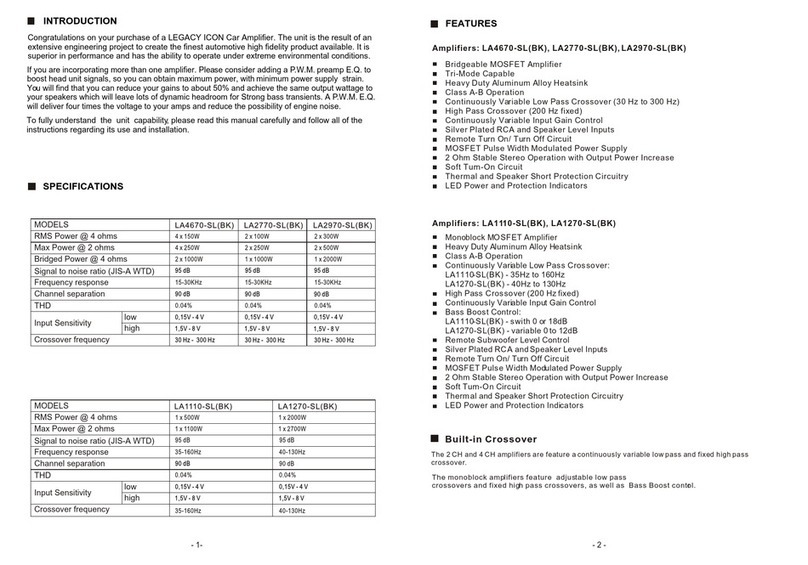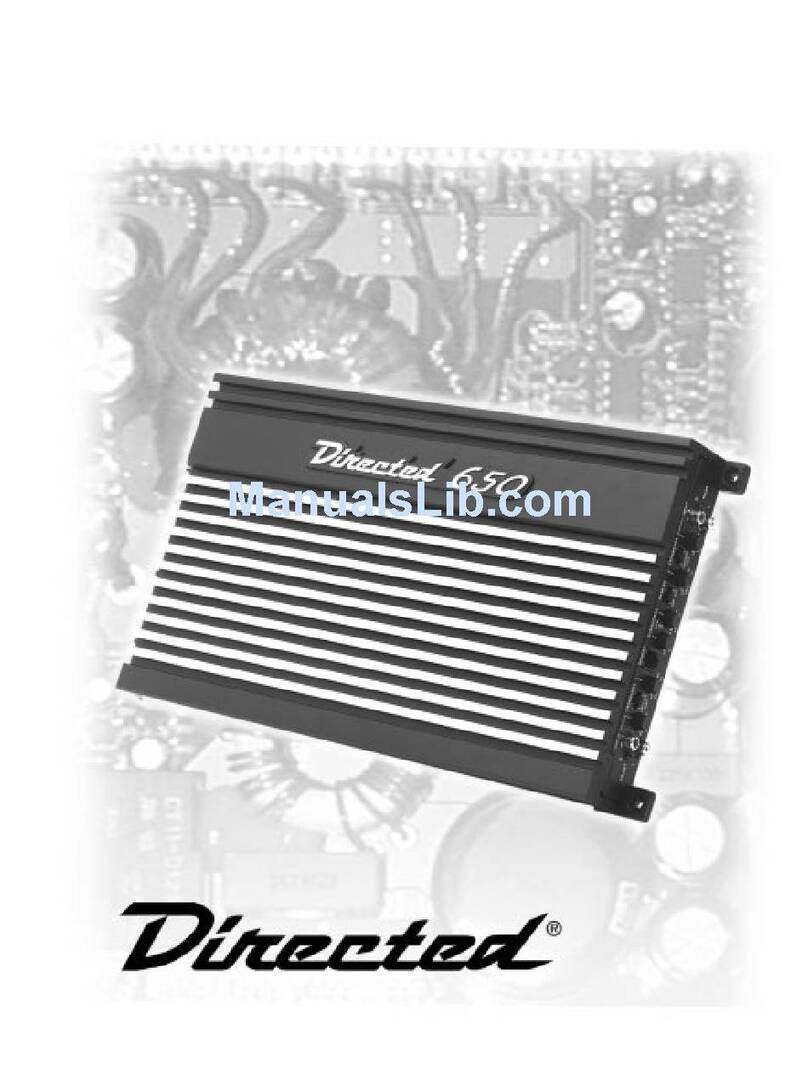5 6
©2005 Diamond Audio Technology. All Rights Reserved ©2005 Diamond Audio Technology. All Rights Reserved
DC CONNECTIONS
D6 amplifiers need proper power and ground connections to deliver maximum
performance and efficiency. This is typically the least understood part of the installation
process. The D6 power supply is completely defendant on current, not voltage, so it is
truly regulated by nature. Voltage drops due to poor connections or grounding practices
will only cause the amp to pull more and more current to sustain output. This increased
current draw causes unwanted noise, thermal issues, and will eventually make the amp
shut down or cause the vehicles electrical system to fail.
The gauge of the power and ground cables must be capable of handling the current
needed by the entire system. Power and ground cables must be of the same gauge. If the
alternator is not capable of supplying enough power for both the vehicle AND the audio
system, a high output alternator should be installed for best performance.
Batteries and High Output Alternators…
The battery in your car is a chemical storage device for electrical energy generated by the
alternator. It is capable of briefly supplying high currents for cold starting the vehicle as
well as powering other important electrical loads either partially or entirely for a limited
period when the engine is off.
In order to supply the power required for ignition, lighting, large audio systems etc. a car
needs its own efficient, reliable, and constantly available source of energy. When the
engine is stopped, the battery is the vehicle’s energy source. When the engine is running,
the alternator is the on-board “electricity generating plant.” It is the job of the alternator
to supply power to all current-consuming loads (including the audio system).
Alternator output, battery capacity, and power demand of all electrical loads and systems
must be matched as ideally as possible so the entire system is reliable and trouble-free
in operation.
PROFESSIONAL INSTALLATION
To achieve maximum performance and life time warranty coverage (see warranty
statement), Diamond Audio strongly recommends that a factory authorized Diamond
retailer professionally installs your new amplifier. The D6 amplifier is an awesome
component with category leading technology, proper attention must be taken during
installation to ensure optimum performance. The authorized Diamond retailer you
purchased your amplifier from has the training, expertise, and tools for proper
installation. If you decide to install your amplifier yourself, please read this manual
through to become familiar with the amplifiers install and set up procedures.
MOUNTING
D6 Reference Amplifiers do not utilize any fan driven cooling system. Care must be taken
to provide a sufficient flow of air around the amplifier for the thermal management
system to operate at peak efficiency. Air should be able the flow over the top and sides of
the amp freely. Adding a fan to your system can be beneficial in keeping your amp cool.
A minimum 2 inches of space around the amplifier is recommended to ensure proper air
flow. Never mount any amplifier where it can get wet. Water damage is not covered
under warranty.
Mounting your amplifier inside an enclosure is not a good idea unless that enclosure is
equipped with ventilation fans to circulate fresh air through the enclosure.
The D6 amplifier features adjustable
mounting flanges. Should they need
to be moved to a different location,
remove the self-tapping screws on
the bottom of each mounting flange.
Move the flange to the desired
location. Carefully tighten the
self-tapping bottom screws.
Warning - Over tighten these screws
will cause stripping of the thread
and/or screw head.












